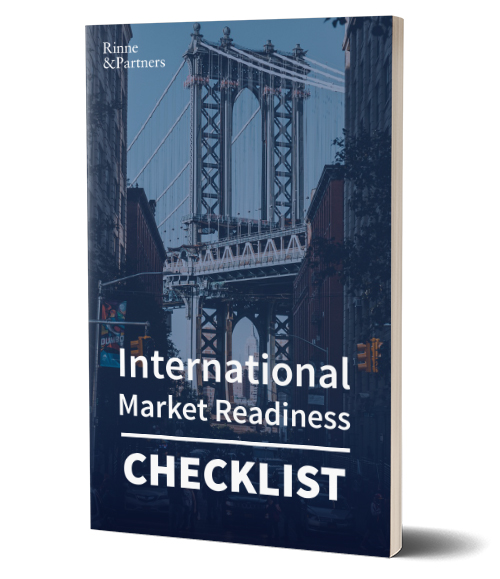The world has changed
Covid-19 has taken a big hit on businesses and we still haven’t seen the impact it will have on the world economy in the coming years. Many companies that rely on exports are struggling with sales as strict travel restrictions prevent them to fly out to meet their customers, prospects or partners. Lots of questions marks and CEO’s and CSO’s are unsure what would be the optimal way forward In order to sustain growth internationally and even grab market share from the competition, requires a whole new way of thinking and an implementation of a Hybrid Sales Model to keep the ball rolling.
Different options to sell abroad
International B2B sales is tricky and the key to success lies in relentless execution. The whole sales team needs to be a well-lubricated engine, building a solid pipeline and closing deals. Needless to say, all parts – including hunters and farmers – need to be top-notch performers. In a nutshell, you have four different options to start selling in a new market and the fifth option is a hybrid of those.
Online
You could try to sell online. Crucial here is that you have clear in your mind who is your target customer and how can you motivate them to visit your website. The customer journey needs to be well thought off and the product or services needs to be simple enough to understand and buy so that customers feel comfortable to complete the purchase. If not, you should still engage in content marketing and social selling to generate leads for your sales team.
Airport hopping
Whether with or without restrictions implied by Covid-19, you can try to sell from home base and go meet with customers on-site. To be honest, I haven’t seen this method work and now it is in many cases impossible. You need to have local people to do the job. Also, this is hard, time-consuming and many times frustrating. When the company CEO is doing a roadshow abroad, expect to see a dip in the cash flow from the domestic business, if there’s no one replacing her/him at home. On another note, customers usually prefer to do business with companies that can convince the buyer that they are here to stay…
Payroll
You can hire your own salespeople. If you have the budget to pay for a good base salary + social security costs + commission, this could be a viable option. You need to really focus on the recruiting process with proper interviews and reference checking. You should be clear on targets (not unrealistic ones, it does take time) and prepare to be patient until the first one is closed. Formal employment agreements, compensation plans, other incentives, and insurances need to be put in place. As the world situation makes even meeting up with your future employee face to face, this option is extremely challenging to implement at the moment.

Download our checklist to make sure your company is ready to expand internationally!
Download NowSales in-sourcing with Contractors
Don’t outsource sales, it is a core function of your company and you need to be the conductor, I would rather use the word insourcing. If your business model is to sell through a channel, the approach is different, but also in this case you need people to manage the channel. So instead of employing your own people, you sign a contract with a local full or part-time sales professional to work locally with end customers and/or partners. Usually, with a fixed monthly retainer + commission.
Pros for using a contractor
Although you usually pay more per job or per day, you will most likely save money overall since you are not required to pay them any benefits and do not need to commit to a salary. You have greater flexibility. When you work with an independent contractor and it is not a good match, you simply don’t hire them again. When you have an employee that doesn’t work out, you may need to fire them, which is not always easy. You can hire the right person for the task needed, contracting someone with specialized service. They often have many years of experience, so you do not need to train them. They are responsible for their own offices, permits, and professional licenses.
Cons
You could lose some control over how tasks are performed because you cannot always closely monitor their work. So, you need to manage your resources. If they are hired short term, you might not get the same worker for the next project. They usually operate on a first term, first-serve basis. They have no sense of company loyalty but are a hired gun for one specific job. However, the key is to find the right profile to your team and do all required to motivate her/him so that you’ll have a real sales team member also for the long run. Most of the cons above can be managed with proper planning and good management.
Choosing a contractor
You should carefully evaluate your contractor to avoid huge disappointments. The world is full of service providers claiming to do this and that, but do not perform. You should focus on at least the following:
- Find the right partner that focuses on sales, forget about market entry consultants (you’re looking for a sales team member yes?)
- Do your homework and check references
- Interview candidates and make sure they have experience and contact to your target segment
- Be careful with objectives and agreements
And when you have signed
- Engage your hire to get proper market feedback
- Prepare; do your go-to-market plan, productise your value proposal
- Training is key
- Manage your sales team professionally with regular sales calls and proper reporting
If you manage to find a good contractor, you have the possibility to strike good business.
Hybrid Sales Model
Due to stricter travel bans, you really have no choice if you wish to continue to gain business from your target markets. Your international sales team needs to build the funnel and execute deals. If you cannot meet with your customers, prospects, or partners on-site, you need to build a sales strategy and go-to-market plan, whereby you, for example, hire a local sales contractor to be your person on the ground and then you implement a support model to participate online when needed. You can complete the plan by bringing-in inside sales, lead generation, and content marketing. You need to define roles and responsibilities carefully, for example in case the offering is complex, you might choose to bring-in the product knowledge online.
This is called a hybrid sales model and it is flexible and can adjust to possible changes in the market or world situation.
I hope that companies are not frozen on their international sales and continue to put the effort in bringing in new business, even though the world has changed. Obviously, there are winners and losers in this came. Winners are the ones that can adjust their go-to-market strategies and think out of the box. There is a window of opportunity to not only gain more sales, but also market share. The Hybrid Sales Model combines optimal resources to create a sales engine to face the challenges of the challenging world situation caused by Covid-19 but even after we have conquered this vicious enemy.
Happy to share my experience on how to create the Hybrid Sales Model.
We build international success stories
International expansion is a daunting task that companies still manage to overlook when crafting their plan. This results in less than ideal execution that doesn’t bring any satisfactory results. We work with B2B SaaS companies to create a comprehensive sales and go-to-market plan as well as build a sales team to make sure your future clients know you’re there to stay.


















